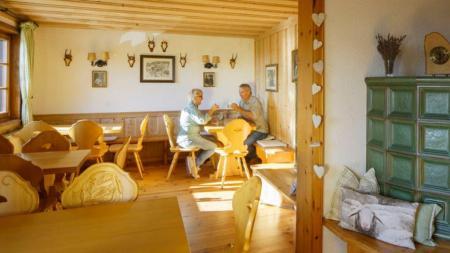Scale the risk of ticks and protection against ticks in the Black Forest
Wild, original and unfathomable: that is what makes the Black Forest so fascinating. Insect-borne diseases like malaria, tika, and dengue fever have put many travelers off the tropics. Summer vacation in the Black Forest gains a new attractiveness. What is the risk of being infected by parasites in native forests? The tick, also known as the common wood tick, is not dangerous in itself, but a possible one The carriers of borreliosis and early summer meningo encephalitis, TBE for short.
When and where do ticks lurk in the Black Forest?
The tick prefers mild warm temperatures in a humid environment. Ticks are particularly active in spring. They like to stay in damp foliage or shrubbery or in high meadows and wait at knee height until a possible host comes by and they can jump on them. There they prefer to go to the back of the knees, armpits, neck or genital area - precisely where it is warm and humid.
Drought and cold do not give them a reason to live. Therefore, a few years ago, areas above an altitude of 1000 meters were considered tick-free because they cannot survive there. So was one Hike around the Feldberg (1493m) as safe. This limit has been increased to 1600 meters. These bloodsuckers benefit from climate change including mild winters.
The name itself - early summer meningo encephalitis - indicates the marriage of this virus. All of southern Germany, including Baden-Württemberg and the Black Forest, are among them TBE risk areas. When classifying as a risk area, it is assumed that 2% of the tick population could be infected. Borrelia are dangerous nationwide.
What is TBE? What is Lyme disease? - Hazard scaling
The TBE virus is transmitted through the tick's saliva. Thus, the danger of quickly removing the tick is not averted. But with a vaccination protection. The effects of infection in humans range from zero-symptom to fatal. 476 clinical cases were documented in Germany in 2017. Borreliosis infection occurs via excretions from the tick that enter the host body: approx. 12 to 24 hours after the tick has attached itself to it. Lyme disease is far less dangerous, but there is currently no vaccination protection. There is an interim check for this - has something bitten me? - makes sense.
Remove ticks correctly: close up, slowly, vertically

trail
Do not drizzle with oil, alcohol or nail polish remover, and do not twist either: for now, keep calm. And this works best when the right equipment is at hand for just such a case. It is advisable, using a tick repellent spray before going for a walk in natureand carry tick tweezers with you. The tick should be gripped with the tip of the tweezers as close as possible to the mouthparts on the skin, squeeze the tweezers and slowly lift the animal out. Don't panic if it doesn't work right away. Any parts of the tick's body remaining in the skin are harmless. Then disinfect the bite with alcohol or refreshing tissues.
If the area of skin swells severely or redness spreads, a doctor should be consulted.
Don't bother about ticks
Ticks have now also established themselves in gardens. But even that shouldn't be a reason to forego nature in all its diversity. Because the risk of developing TBE after a tick bite in the risk areas is officially scaled up to 1 in 150. Even in designated risk areas, only an average of 2% virus infestation of the animals is calculated. Because according to the Robert Koch Institute, Berlin, the average of infected animals is calculated from 0,1 to 3,4 percent of ticks with the virus. This is no consolation when one of these animals is stabbing and you are one of the third people who develop symptoms of the disease. In the others, the infection proceeds without any noticeable symptoms.
Children and women are found to be more immune than men and the elderly. Why this is so is still unclear. In 5% of people who are bitten by a tick, the bite is accompanied by a Lyme disease infection. Of these, 1% of those infected develop symptoms such as flu and body aches. The immune system also seems to play a role in this. And this, in turn, can best be strengthened in the great outdoors.













